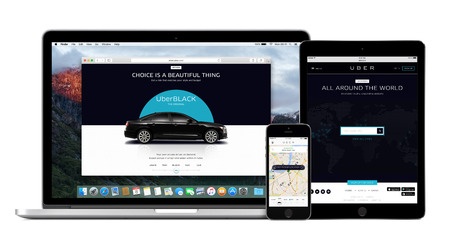Employee or Contractor: The Many Shades of Grey

The Right to Contract: It is Not Just An “Uber” Question
“Every problem has a solution”. That was Travis Kalanick’s firm belief which drove him to found Uber, now a thriving $50 billion business birthed in 2009. A ride-hailing company described in its website as a “premier enterprise delivery system” made possible with its P2P app, their primary stakeholders are their drivers, rightfully called “partners”.

Half a decade after its swift success spread to 60 countries worldwide, an Uber driver-partner filed a lawsuit seeking compensation for driving expenses, overtime and much more.
Pardon the pun, but Barbara Ann Berwick did know how to drive Uber crazy. After almost a year with Uber, Barbara Ann Berwick blew a powerful punch to Uber when she contested her right as an employee and not as an independent contractor. The California Labor Commission ruled in her favor last June.
She was awarded more than $4000 in expenses.
Let me tell you about Uber case number two. Florida driver Darrin McGillis was in a car accident and was immobile and couldn’t work. Uber wouldn’t “sympathize or empathize” with McGillis, so he filed for unemployment. He claimed he qualified since he’s effectively one. The Florida Department of Economic Opportunity sided with his case. However, Uber countered the decision. The Miami Herald also reported that Uber could overturn similar decisions.
This is only the saga of what may be known as Uber’s nightmare on every street. A precedent or two could set the pace and open up more sink holes along the way.
I wonder how the IRS’s 20-Factor Test impacts similar companies’ business models today? This benchmarks the determinants whether a worker is classified as an employee or contractor. Established in 1862 under Lincoln’s presidency, has this centuries’ old IRS guidelines been blindly antiquated and outdated in the eyes of employers? Isn’t this written in “black and white”? Why do so many shades of grey continue to crop up like the Uber cases?
Maybe, given its due and proper application, in the eyes of employers, the 20- Factor Test does have more shades of grey up its sleeves, and involved parties have nowhere to go but through litigation or arbitration for clarification and resolution.
Or could it be that these companies’ rules are the ones that are “grey-shaded” from the very start?
This brings us to the hard question, are rights eroding when it comes to the right to contract?
Some points to consider:
Related Posts
-
 (Video) Residual Commissions: Work Once and Get Paid More Than Once
No Comments | Jul 4, 2015
(Video) Residual Commissions: Work Once and Get Paid More Than Once
No Comments | Jul 4, 2015 -
 The Core of Passive Income?
No Comments | Jul 24, 2015
The Core of Passive Income?
No Comments | Jul 24, 2015 -
 (Video) Multiple Streams of Income Develop Over Time – Basics Build the Foundation
No Comments | Jul 3, 2015
(Video) Multiple Streams of Income Develop Over Time – Basics Build the Foundation
No Comments | Jul 3, 2015 -
 (Video) Warren Buffet’s Investing Wisdom Can Be Applied to any Passive Income Strategy
No Comments | Jul 4, 2015
(Video) Warren Buffet’s Investing Wisdom Can Be Applied to any Passive Income Strategy
No Comments | Jul 4, 2015 -
 How to Value A Dollar Saved
No Comments | Jul 17, 2015
How to Value A Dollar Saved
No Comments | Jul 17, 2015 -
 (Video) Why You Need to Start Building Your Business
No Comments | Jul 4, 2015
(Video) Why You Need to Start Building Your Business
No Comments | Jul 4, 2015
